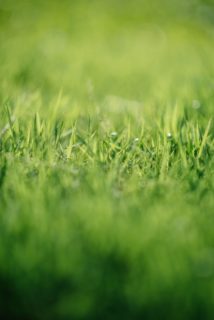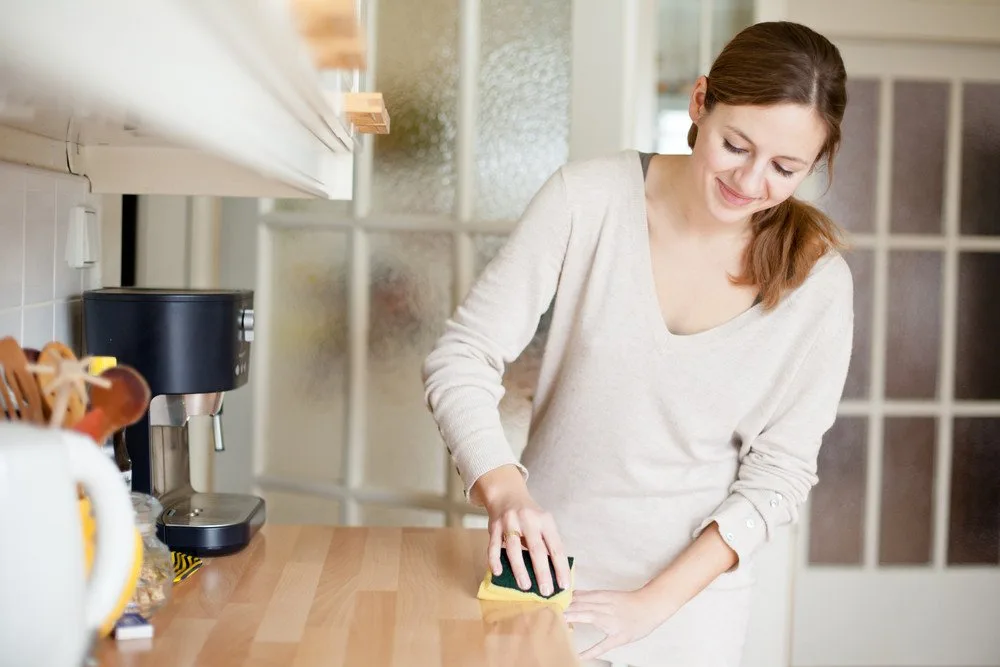Being health-conscious should involve keeping your home safe and healthy too. Family members may find that their allergies are more irritating at home than in other environments. While you may feel that you clean and maintain your home well, there are generally things that can be done to make it healthier. This includes improving the air, water, and environmental quality.
10 Hacks To A Healthy Home
1. Entryway Mats on Both Sides of the Door
Cleaning your feet before entering a home will cut down on dirt, dust, and grime tremendously. Putting a mat on both sides of the door will increase the likelihood that the toxins stay at the door. In addition to this simple upgrade, requiring guests and family members to leave their shoes in the hallway by the door will decrease the dirt trekked into your home, making your home healthier
2. Install Water Filters
Water can be a significant source of illness and discomfort. While most municipal water is safe, it is not always high quality and many cities across the US have hard water. This means that too many harsh minerals are present, which can cause a residue build-up and dry out the skin and there are several options for installing water filters.
For drinking water, you may choose a refrigerator with a filtered water dispenser, a pitcher-based water filter, or a tap installed filter. While these are fine, this does not change the water coming from the bathroom taps – in the shower or faucet. Filtered shower faucets may be installed at your convenience. The upgrade that will treat all faucets at once is a whole house system. These may cost thousands of dollars, but many homeowners feel that these systems are the best way to go.
3. Install Air Filters
Just like water filters improve water quality, air filters improve the air quality in the home tremendously. You may also choose to do this in many ways. These filters range from plug-in models that may be purchased in many superstores or whole-house models that must be installed professionally.
Like everything else, weigh up your options before choosing an air filtration system. If you have family members who suffer from dust and pollen allergies, this one upgrade may drastically change their lives. Indoor plants also improve air quality, so it may be worth investing in a few.
4. Replace Old Insulation
Some homes used to have asbestos-based insulation installed upon completion. The insulation may have been fantastic for keeping heat and cold where it belonged, but it has been tied to many health issues over the years. If your home is older, consider an upgrade to non-asbestos based insulation. There are much more efficient, health-conscious, and environmentally friendly options these days. Contact a contractor to find out your best options.
5. Lime Plaster
Lime plaster may not seem like an upgrade since it is so old. While it may have been used for centuries, it has fallen out of use over time and been replaced by a cement-based plaster. While cement plaster may have fantastic qualities, lime plaster still has more water repellent qualities.
You may be wondering why that is important. The bottom line is that it is more resistant to mold and bacteria build up because it is less affected by moisture. No, you do not need to get your entire home today, but whenever you remodel a room, consider upgrading to lime.

Photo by chuttersnap on Unsplash
6. Organic Lawn Care
Stop using harsh chemicals and pesticides. Two of the most significant contributors to water pollution are pesticides and harsh outdoor substances. Consider using nature to repel insects and other pests. Plant a variety of plants and vegetation that repel different animals and pests. If you still find that you’re having a pest issue, use organic, non-toxic solutions.
7. Upgrade Lawn Equipment to Electric
Wherever possible, upgrade tools and equipment to electric or battery-powered rather than gas. Many companies are now making rechargeable batteries for circular saws, chainsaws, weed eaters, leaf blowers, and drills. Use battery-powered and electrical equipment whenever possible to reduce gasoline consumption and to avoid releasing toxins into the air.
8. Upgrade Your Vacuum
If you have an older vacuum, it may be time to upgrade. One great upgrade is to purchase a vacuum with a HEPA filter. This filter will help to eliminate dust from the surfaces in your home. This will, obviously, create a healthier environment. If you want a significant upgrade, consider a whole house vacuum.
These central vacuum systems have ducts in the walls to transport the toxins away from your home. The filters may never need changing, and their collection bins rarely do. Often the bins will be located outside the house so that you do not reintroduce dust, dander, and particulates back into your home.
9. Install Detectors
If your smoke alarm is not already equipped with a carbon monoxide sensor, upgrade today! In addition to carbon monoxide, radon and bacteria testers may be installed or used in different areas. Wells and water supplies may need testing. Testing the water and air frequently will minimize home illnesses.

Photo by Nathan Cowley from Pexels
10. Upgrade Your Cleaners
Toxic chemicals for cleaning can make some people sick. Use natural or non-toxic chemicals whenever possible.
Vinegar and hot water are excellent for cleaning and disinfecting many surfaces around your home. Toss anything that may be old and harbor germs, such as cracked cutting boards scratched pots and pans, and chipped knives. While the chipped blades may not present a toxin-based hazard, they are dangerous and should be replaced. Proper washing and drying clothing, bed linens, dishes, and furniture will also cut down on the build-up of mold, mildew, and dust.
Final Thoughts
Some of these upgrades may be a bit pricey to do at the same time. A central vacuum system may be out of your current price range, but a HEPA filter will work wonders. A simple, filtered shower head can also make you feel much better. Don’t overextend yourself, but look for all the little ways you may upgrade your home today.
Who is the author?
Elizabeth Shields is a small business owner and mother of two young boys. Her passions include healthy living, parenting, and the environment.
References
Baldwin, Deborah, “72 Easy Upgrades for a Healthier Home.” This Old House 2020, https://www.thisoldhouse.com/green-home/21018002/72-easy-upgrades-for-a-healthier-home
Lefton, Andreana. “The 11 Best Home Upgrades You Can Make for Your Health.” Bob Vila. https://www.bobvila.com/slideshow/the-11-best-home-upgrades-you-can-make-for-your-health-53272
“25 Tips For a Greener and Healthier Home” Better Homes and Gardens. 2020, https://www.bhg.com/home-improvement/advice/expert-advice/25-tips-for-a-healthier-home/?slide=slide_e3c17cea-d21d-4ab0-91bc-7dff2761dc14#slide_e3c17cea-d21d-4ab0-91bc-7dff2761dc14.
Lefton, Andreana. “The 11 Best Home Upgrades You Can Make for Your Health.” Bob Vila. https://www.bobvila.com/slideshow/the-11-best-home-upgrades-you-can-make-for-your-health-53272
Bower, John. “Chapter 5: Indoor Air Pollutants and Toxic Materials” Centers for Disease Control, 1 OCT 2009. https://www.cdc.gov/nceh/publications/books/housing/cha05.htm
“How to Make Your Home a Healthy One.” On Health, 1 Jun 2016, https://www.onhealth.com/content/1/healthy_safe_home




![women [longevity live]](https://longevitylive.com/wp-content/uploads/2020/01/photo-of-women-walking-down-the-street-1116984-100x100.jpg)










